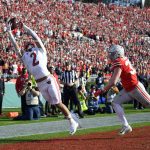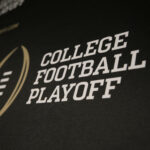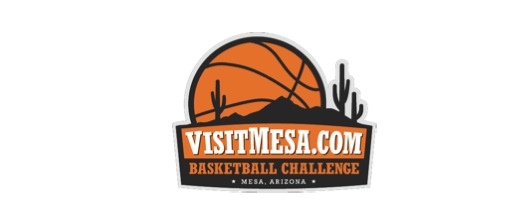The Hotline mailbag is published every Friday. Send questions to pac12hotline@bayareanewsgroup.com or hit me on Twitter: @WilnerHotline.
Please note: Some questions have been edited for clarity and brevity.
In your estimation, did the Big 12 leave money on the table by opting to renew with ESPN and Fox and not going to the open market? Why was it so important for the conference to beat the Pac-12 to the finish line?— Doug Ware
Yes, absolutely. The Big 12 accepted a lower valuation with the early renewal of agreements than it would have received by waiting until 2024 and going to market with its rights package
If the Big 12 hadn’t moved, the only point of comparison for Pac-12 market value would have been the Big Ten’s deal which is believed to average $62.5 million per school annually ($1 billion for 16 teams).
Now that the Big 12 reportedly has secured $31.7 million per school starting in 2025, potential bidders like ESPN and Fox can point to that figure as the benchmark for the Pac-12.
Previously, there was only a ceiling, established by the Big Ten.
Now, there is a floor, courtesy of the Big 12.
And anyone with an ounce of sanity would conclude the Pac-12 is closer to the Big 12 in valuation than the Big Ten.
So we know why ESPN and Fox would agree to renew the Big 12’s deal: It’s the cheaper option and gives them cost certainty with a valued partner through 2031.
But why would Big 12 commissioner Brett Yormark agree to an early renewal?
Why wouldn’t the Big 12 bet on itself, wait a year-and-a-half, and then take its rights to the market?
Well, Yormark is clearly interested in luring Pac-12 schools and now has hard numbers to support any offer. Will it work?
The terms outlined for expansion candidates are not known — the Big 12 hasn’t actually signed its deal yet — but we know it won’t be transformative money for Pac-12 schools.
At worst, the Pac-12’s own deal will be $2 million to $3 million per school less than the Big 12’s contract, which probably isn’t enough to convince anyone to jump.
(After all, the Pac-12 is already making less than the Big 12 — substantially less, in fact. The revenue disparity in the current fiscal year is likely to be $6 million to $8 million per school.)
We should add that the renewal gives Yormark leverage from which he can pursue schools outside the Power Five, including San Diego State, Fresno State and, perhaps, Gonzaga.
But the early renewal strategy wasn’t rooted entirely in revenue.
Security for the Big 12 in post-Texas/Oklahoma era also played a central role, and the early renewal deal provides just that for a conference that has experienced so much tumult over the past 12 years.
Assuming they sign the agreement, Brigham Young, Houston, Cincinnati and UCF are now bound to the conference until 2031.
They are off the market for the Pac-12.
And if you think members of that quartet weren’t quietly keeping their options open — at least until the Big 12 provided them with contractual security beyond 2025 — your head is buried in the windswept dirt of the Southern Plains.
Yormark has smartly locked everyone down into the next decade.
How long before Oregon and Washington leave the Pac-12? — @Time_Traveled
As we have written repeatedly, there is no indication the Big Ten plans to expand again in this contract cycle — meaning the next opportunity for movement would come at the end of the decade.
Could circumstances change swiftly? Sure. Anything is possible in realignment.
But at this point, it doesn’t appear that the Pacific Northwest powers have that option, and they certainly aren’t interested in joining the Big 12.
As a result, Oregon and Washington are likely to sign a media deal with the Pac-12, serving as the twin anchors that hold the conference together.
One more point: The Hotline doesn’t believe the Big Ten’s ultimate goal is to add more West Coast schools. Instead, it wants to plant the conference flag in ACC territory, particularly in Florida.
Why? Because its primary media partner, Fox, is currently boxed out of the third-most populous state in the country.
ESPN dominates the Sunshine State, along with North Carolina and Georgia, through its agreements with the SEC and ACC.
Expansion to the southeast makes more sense financially for the Big Ten — and Fox — than additional acquisitions on the West Coast.
Would the value of an Amazon TV deal be higher or lower than deals with Fox or ESPN considering Amazon has a lot less inventory? — @Kevin10TV
That depends largely on the number of games and the selection order. Amazon might pay more than ESPN to secure the A package of games, or vice versa.
The ongoing media rights negotiations aren’t simply about settling on a dollar value. First and foremost, they are about crafting inventory packages that create the dollar value.
We’d bet a nickel, but no more, that Amazon and ESPN will share the Pac-12’s top football inventory.
And in that regard, the Big 12 seemingly has an advantage over the Pac-12.
While the latter has better football brands with Oregon and Washington, the former arguably has a deeper well of quality games (more parity) to offer network partners.
In other words, the Big 12’s third selection in a given week would be more attractive than the Pac-12’s third selection, in part because it will have 12 teams.
Did the Pac-12 reach out to Gonzaga for possible expansion? — @MarcSheehan006
Of course, the Pac-12 has discussed membership with Gonzaga — and with San Diego State, too, for that matter.
Everybody’s talking to everybody. The difference is that the Big 12’s meeting with Gonzaga was leaked to the media, while the Pac-12 has kept conversations private.
We won’t offer a guess on Gonzaga’s ultimate destination — the Big East is also a possibility — and it’s entirely possible the Zags stay right where they are.
There’s a strong case to be made that the WCC provides coach Mark Few with the best path to the national championship.
There’s talk about adding Gonzaga and San Diego State, but why not UNLV? Adding the Las Vegas market seems to be a logical play given its growth and the access to venues: football as well as basketball. — @BradBelstock
There are three elements to the Pac-12’s evaluation of new members: the competitive fit, the financial fit, and the institutional fit.
I’m not sure the Rebels work on any level.
UNLV isn’t a top-tier academic school, the football program is subpar and the Las Vegas market, while growing, doesn’t provide nearly enough value (No. 40 nationally) to increase revenue for the existing schools.
In contrast, San Diego State is a better fit in every category.
And we’d make the case that Fresno State is, too.
Can you please clarify the Pac-12 bowl-selection order? There’s no more direct correlation to conference position and bowl destination, right? — @hereforsportUoU
Here you go, without the College Football Playoff included:
Rose Bowl
Alamo Bowl
Holiday Bowl
Las Vegas Bowl
Sun Bowl
LA Bowl
ESPN bowl
The ESPN game would be either the Gasparilla, First Responders or Armed Forces, depending on matchups and available teams.
Also, please note: Yes, there is a direct correlation to the conference standings.
The Alamo, Holiday and Las Vegas bowls have some flexibility — they can pass on Team X in favor of Team Y as long as there is no more than a one-game difference in conference record.
The Sun and LA bowls must base their selections on order-of-finish.
What is the Pac-12 gaining by refusing to issue a public statement regarding the atrocious officiating in the USC-Arizona game? It clearly meets the criteria. — @Jalex0077
Yes, it does. In 2019, the Pac-12 announced it would issue public clarifications, or apologies, for officiating gaffes that met the following criteria:
• A game-ending call or no-call impacts the result of the game;
• A call involves a significant error in officiating mechanics;
• A call involves an error in rules interpretation;
• Other extraordinary circumstances
Allowing the clock to run before the ball was spotted at the end of the first half in Tucson seems to qualify as an error in mechanics (i.e., timing).
The Hotline was disappointed by the absence of a statement. Everything about that situation, from the real-time clock mismanagement to the refusal to rectify the mistake on the field (with replay) to the lack of a clarification — it was all disappointing.
USC fans have every right to be furious. It wasn’t a conspiracy; it was sheer incompetence.
Who would have to lose before Oregon had a chance to make the College Football Playoff? — @theplanetbob
As we mentioned in the Week 10 preview, the Ducks desperately need Georgia to beat Tennessee on Saturday — and the larger the margin, the better.
Here’s why: If the Bulldogs lose, they are likely to finish second in the SEC East and boxed out of the conference title game.
But 11-1 Georgia would make the playoff ahead of 12-1 Oregon, even though the Bulldogs won’t have a division title and the Ducks would own a conference championship.
There is no way (none, zero, zip) that the selection committee would ignore the 49-3 head-to-head result.
And with its champion assured of a berth, two SEC teams would be standing in Oregon’s path.
The Ducks not only need Georgia to finish as an undefeated SEC champion, they need the ACC and Big 12 to produce one-loss winners.
And in that scenario, Oregon would have a real shot at the playoff.
Will Arizona make a bowl game this year? — @robservatory
We’re skeptical … deeply skeptical.
The Wildcats (3-5) must win three of their last four and have two daunting challenges in succession: this weekend’s trip to Utah, then a visit to UCLA.
Barring a major upset in one of those games, Arizona will be eliminated from a bowl berth (i.e., seven losses) before it concludes the season at home against WSU and Arizona State.
That said, each program must be measured against its own circumstances and expectations.
If the Wildcats finish 5-7, it’s a successful season.
And if they finish 4-8 but beat ASU, it’s a successful season.
How much more time is David Shaw getting at Stanford? — @benwilkinson
The Hotline plans to delay any deep dives into Shaw’s future until the season concludes, for one reason: The Cardinal (3-5) could become bowl-eligible, and then any discussion of Shaw’s dismissal turns moot.
If Stanford beats Washington State on Saturday (as a five-point underdog), it would need two wins to clinch a spot in the postseason. And the stretch-run schedule is quite manageable, with two struggling opponents remaining: Cal (3-5) and BYU (4-5).
(We’re counting the other remaining game, at Utah, as a loss.)
So let’s hold off on Shaw’s situation, at least for a few weeks.
I love Bill Walton speaking out against the UCLA move to the Big Ten. Are we going to hear more from Bill prior to the University of California Board of Regents decision on Nov 17? — @TerryTerry79
Walton issued a statement about the move that was critical of UCLA administration, then offered a passionate, detailed explanation of his views on ‘Canzano and Wilner: The Podcast.’
(It was Walton as you’ve never heard him: passionate but serious and deeply saddened by the development.)
Whether he has additional plans to discuss the issue in public, I cannot say.
You’d have to ask him.
Support the Hotline: Receive three months of unlimited access for just 99 cents. Yep, that’s 99 cents for 90 days, with the option to cancel anytime. Details are here, and thanks for your support.
*** Send suggestions, comments and tips (confidentiality guaranteed) to pac12hotline@bayareanewsgroup.com or call 408-920-5716
*** Follow me on Twitter: @WilnerHotline
*** Pac-12 Hotline is not endorsed or sponsored by the Pac-12 Conference, and the views expressed herein do not necessarily reflect the views of the Conference.
Related posts:

(AP Photo/John McCoy)
Sunday Wilner Hotline – Pac-12 survival guide: Five forces that will define the path to salvation, or extinction
(AP Photo/Ralph Freso, File)
Pac-12 survival: Kliavkoff on media rights timeline, Big 12 and Big Ten threats, playoff expansion and UCLA’s move Pac-12 power ratings: UCLA, Oregon climb as choice matchups await in the season’s second half
Pac-12 power ratings: UCLA, Oregon climb as choice matchups await in the season’s second half

The College Football Playoff logo (AP Photo/Tony Gutierrez, File)
College Football Playoff projections: Breaking down Boise State’s path to a top-four seed (it all starts this week)
